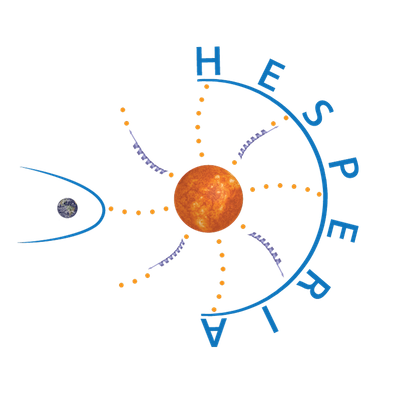HESPERIA: High Energy
Solar Particle Events forecasting and Analysis

High-energy solar energetic particles (SEPs) emitted from the Sun are a
major space weather hazard motivating the development of predictive
capabilities. We present the ongoing EU HORIZON2020 HESPERIA (High Energy
Solar Particle Events foRecastIng and Analysis) project, its structure,
its main scientific objectives and forecasting operational tools, as well
as the added value to SEP research both from the observational as well as
the SEP modelling perspective. The project addresses through
multi-frequency observations and simulations the chain of processes from
particle acceleration in the corona, particle transport in the
magnetically complex corona and interplanetary space to the detection near
1 AU. Furthermore, publicly available software to invert neutron monitor
observations of relativistic SEPs to physical parameters that can be
compared with space-borne measurements at lower energies is provided for
the first time by HESPERIA. In order to achieve these goals, HESPERIA is
exploiting already available large datasets stored in databases such as
the neutron monitor database (NMDB) and SEPServer that were developed
under EU FP7 projects from 2008 to 2013. Forecasting results of the novel
SEP operational and post-event forecasting tools published via the
consortium server of ‘HESPERIA’ are presented, as well as some scientific
key results on the acceleration, transport and impact on Earth of
high-energy particles.
Contact: Dr. Olga Malandraki (National Observatory of Athens, Greece) and
the HESPERIA Consortium